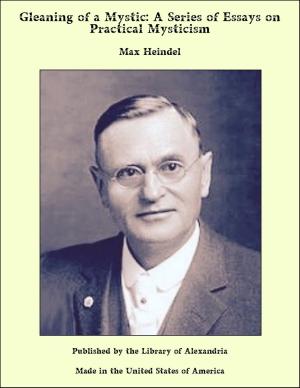Assyria, Its Princes, Priests and People: By-Paths of Bible Knowledge VII
Nonfiction, Religion & Spirituality, New Age, History, Fiction & Literature| Author: | A. H. Sayce | ISBN: | 9781465582171 |
| Publisher: | Library of Alexandria | Publication: | March 8, 2015 |
| Imprint: | Language: | English |
| Author: | A. H. Sayce |
| ISBN: | 9781465582171 |
| Publisher: | Library of Alexandria |
| Publication: | March 8, 2015 |
| Imprint: | |
| Language: | English |
Among the many wonderful achievements of the present century there is none more wonderful than the recovery and decipherment of the monuments of ancient Nineveh. For generations the great oppressing city had slept buried beneath the fragments of its own ruins, its history lost, its very site forgotten. Its name had passed into the region of myth even in the age of the classical writers of Greece and Rome; Ninos or Nineveh had become a hero-king about whom strange legends were told, and whose conquests were fabled to have extended from the Mediterranean to India. Little was known of the history of the mighty Assyrian Empire beyond what might be learnt from the Old Testament, and that little was involved in doubt and obscurity. Scholars wrote long treatises to reconcile the statements of Greek historians with those of Scripture, but they only succeeded in evolving theories which were contradicted and overthrown by the next writer. There was none so bold as to suggest that the history and life of Assyria were still lying hidden beneath the ground, ready to rise up and disclose their secrets at the touch of a magician's rod. The rod was the spade and the patient sagacity which deciphered and interpreted what the spade had found. It might have been thought that the cuneiform or wedge-shaped inscriptions of Assyria could never be forced to reveal their mysteries. The language in which they were written was unknown, and all clue to the meaning of the multitudinous characters that composed them had long been lost. No bilingual text came to the aid of the decipherer like the Rosetta Stone, whose Greek inscription had furnished the key to the meaning of the Egyptian hieroglyphics. Nevertheless the great feat was accomplished. Step by step the signification of the cuneiform characters and the words they concealed was made out, until it is now possible to translate an ordinary Assyrian text with as much ease and certainty as a page of the Old Testament.
Among the many wonderful achievements of the present century there is none more wonderful than the recovery and decipherment of the monuments of ancient Nineveh. For generations the great oppressing city had slept buried beneath the fragments of its own ruins, its history lost, its very site forgotten. Its name had passed into the region of myth even in the age of the classical writers of Greece and Rome; Ninos or Nineveh had become a hero-king about whom strange legends were told, and whose conquests were fabled to have extended from the Mediterranean to India. Little was known of the history of the mighty Assyrian Empire beyond what might be learnt from the Old Testament, and that little was involved in doubt and obscurity. Scholars wrote long treatises to reconcile the statements of Greek historians with those of Scripture, but they only succeeded in evolving theories which were contradicted and overthrown by the next writer. There was none so bold as to suggest that the history and life of Assyria were still lying hidden beneath the ground, ready to rise up and disclose their secrets at the touch of a magician's rod. The rod was the spade and the patient sagacity which deciphered and interpreted what the spade had found. It might have been thought that the cuneiform or wedge-shaped inscriptions of Assyria could never be forced to reveal their mysteries. The language in which they were written was unknown, and all clue to the meaning of the multitudinous characters that composed them had long been lost. No bilingual text came to the aid of the decipherer like the Rosetta Stone, whose Greek inscription had furnished the key to the meaning of the Egyptian hieroglyphics. Nevertheless the great feat was accomplished. Step by step the signification of the cuneiform characters and the words they concealed was made out, until it is now possible to translate an ordinary Assyrian text with as much ease and certainty as a page of the Old Testament.















